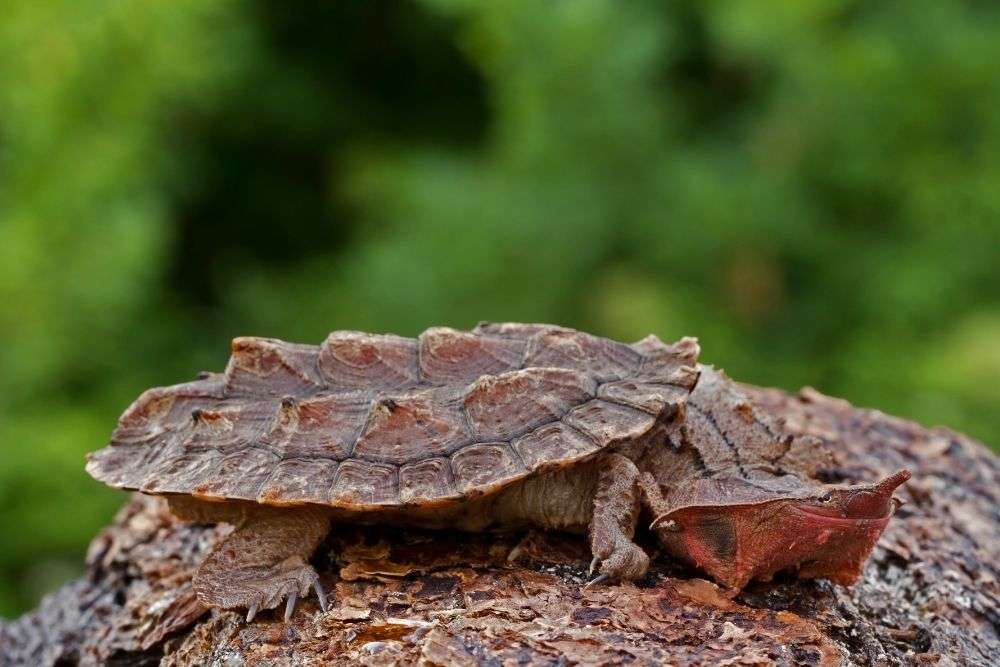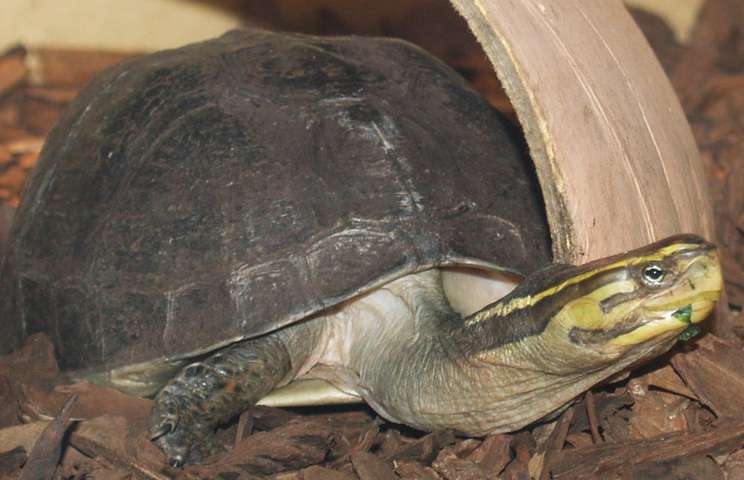
A fascinating-looking freshwater turtle native to South America is the mata-mata. Particularly in the Amazon and Orinoco basins, it can be found.
Although this freshwater turtle isn’t as well-known as some others, such as red-eared sliders, many turtle aficionados adore it because of its distinctive appearance and amusing behaviors.
This turtle resembles a hybrid plant. The carapace resembles bark, while the head and neck resemble leaves. The mata-appearance mata’s enables a seamless integration into its natural environment. This camouflage is useful for a carnivorous species when it needs to eat. They must be fed virtually solely fish while in captivity.
Care as a Pet

Housing
Like each turtle, mata-mata begins life as a little creature. These turtles may live in a 60-gallon tank as hatchlings and juveniles. They will, however, shortly outgrow this. These turtles require tanks that are 80 to 150 gallons in size as adults.
As a general rule, allow 10 to 15 liters of water capacity for every inch the turtle is long. If you decide to utilize a tank, the turtle will eventually require between 150 and 200 gallons of water after it reaches adult size.
The water should be between 8 and 10 inches deep and at least 4 feet wide and long for adults. A water depth of about 4 inches should be adequate for baby fish. The mata-mata can’t swim well.
Heating
A tropical species that needs hot temperatures is the mata-mata. The ideal water temperature ranges from 80 to 90 degrees. It is just impossible to sustain such high temperatures in an outdoor pond all year round if you live in a temperate region. The turtles should be kept indoors to solve this problem.
Although heating can be pricey, it is necessary for the mata-mata. To learn more, see our heater guide.
Feed
The carnivorous mata-mata turtle mostly consumes fish and other aquatic animals like worms and insects. This turtle prefers to swallow its prey whole because its jaws are weak. When seeking food, this species prefers to remain motionless. Both the algae that develop on its shell and its disguised appearance are essential to its hunting.
Table





